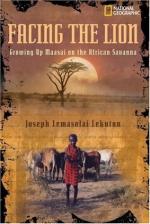|
This section contains 645 words (approx. 3 pages at 300 words per page) |

|
A savanna is a dry grassland with scattered trees. Most ecologists agree that a characteristic savanna has an open or sparse canopy with 10–25% tree cover, a dominant ground cover of annual and perennial grasses, and less than 20 in (50 cm) of rainfall per year. Greatly varied environments, from open deciduous forests and parklands, to dry, thorny scrub, to nearly pure grasslands, can be considered savannas. At their margins these communities merge, more or less gradually, with drier prairies or with denser, taller forests. Savannas occur at both tropical and temperate latitudes and on all continents except Antarctica. Most often savannas occupy relatively level, or sometimes rolling, terrain. Characteristic savanna soils are dry, well-developed ultisols, oxisols, and alfisols, usually basic and sometimes lateritic. These soils develop under savannas' strongly seasonal rainfall regimes, with extended dry periods that can last up to 10 months. Under natural conditions an abundance of insect, bird...
|
This section contains 645 words (approx. 3 pages at 300 words per page) |

|


